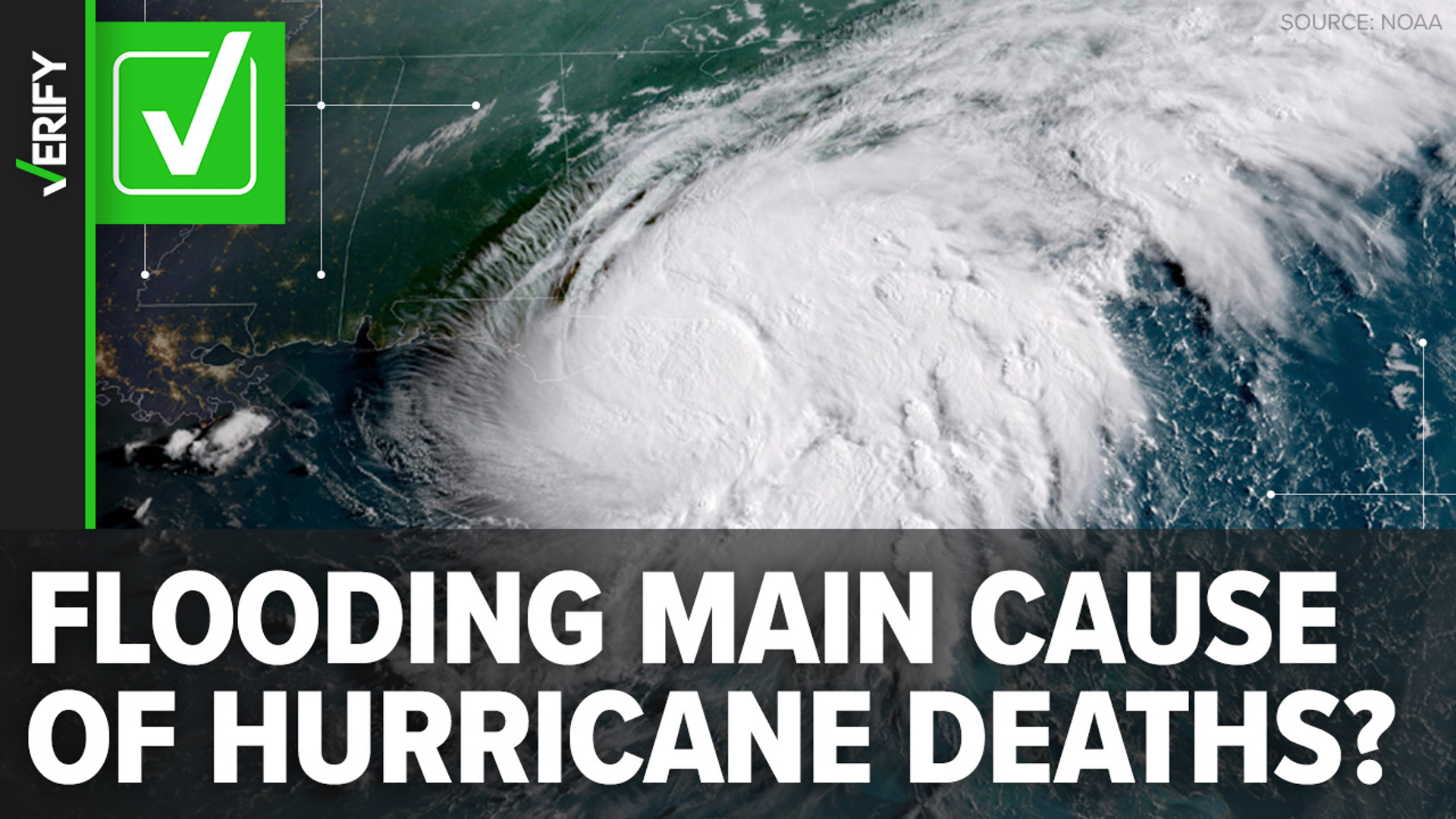Several devastating hurricanes have battered the U.S. so far in 2024. The damage hasn’t been limited to just the coasts, either; inland areas such as the southern Appalachians have suffered this hurricane season.
Not all of the storms were strong when they struck the U.S., which is why some people on social media might have downplayed their potential impacts ahead of landfall. Questions about what causes the most deaths during hurricanes was also a frequently popular search on Google whenever a storm neared landfall.
THE QUESTION
Is flooding caused by excessive rainfall the leading cause of hurricane deaths?
THE SOURCES
THE ANSWER
Yes, flooding caused by excessive rainfall is the leading cause of hurricane deaths.
WHAT WE FOUND
Most direct hurricane deaths are either from freshwater flooding caused by rain or coastal flooding caused by storm surge. Even category 1 hurricanes and tropical storms can create deadly flooding and storm surge.
Between 2013 and 2022, 57% of all direct hurricane deaths in the U.S. Atlantic basin were drowning deaths due to freshwater flooding caused by rainfall, according to the American Meteorological Society (AMS). Another 15% of deaths were caused by surf and rip currents, 12% by wind and 11% by storm surge.
An earlier study of direct hurricane deaths in the U.S. Atlantic basin from 1963 to 2012 found that 49% of deaths during that time were caused by storm surge and 27% by rainfall-induced freshwater flooding. No other single cause of death accounted for more than 10% of all direct hurricane deaths.
About 40% of all deaths from the 1963 to 2012 study were from Hurricane Katrina. Most of the 1,100 people who died during Katrina were killed by the hurricane’s storm surge, which breached New Orleans’ levees.
Even though drowning to storm surges caused the most deaths during that period, the study noted that more tropical storms killed people with rainfall-induced floods than with any other hazard.
And even though the deadliest storm, Katrina, was a major hurricane that reached category 5, most of the deadliest storms between 2013 and 2022 were category 1 hurricanes or tropical storms.
“The deadliest storms were not necessarily the strongest at landfall. Only 3 of the 10 deadliest were ‘major hurricanes’ (Category 3 or higher on the SSHWS) when they came ashore,” the study said. “Six of the 10 were tropical storms or Category 1 hurricanes at landfall.”
How much rain a storm dumps in one spot has very little to do with the strength of a hurricane. The National Oceanic and Atmospheric Administration (NOAA) says six factors impact the rainfall potential of tropical cyclones at landfall: the storm track (or movement), time of day, storm size, topography, wind shear, and nearby storms.
That means large and slow-moving storms tend to leave behind greater rainfall totals because they rain over one spot for longer. Heavy rains can then be further exacerbated if the hurricane merges with another storm while stalling over flat or low-lying land.
Tropical Storm Debby is stalling near the coasts of Georgia and South Carolina, which means it could rain over that area for most of the week.
In 2001, Tropical Storm Allison stalled over the Houston area and dumped nearly 37 inches of rain over the Port of Houston, according to the National Hurricane Center’s report following the storm. Allison was a tropical depression for most of the four days it stalled over the area. The storm killed 41 people in total, 27 of whom died to flooding from excessive rainfall.
Hurricane Harvey, which stalled over the Houston area in 2017, produced over 47 inches of rain over some parts of Houston’s Harris County, according to the Harris County Flood Control District. Harris County usually gets about 50 inches of rain in an average year.
As of the morning of August 6, Debby is forecast to produce more than 20 inches of rain in some areas between Charleston, South Carolina and Wilmington, North Carolina.
FEMA recommends preparing for potential hurricane flooding by learning if your property is on flood-prone land, learning community evacuation routes and how to find higher ground, clearing loose and clogged rain gutters and preparing an emergency kit.
This story is also available in Spanish / Lee este artículo también en español: Sí, inundaciones por lluvias excesivas es la principal causa de muertes por huracanes

